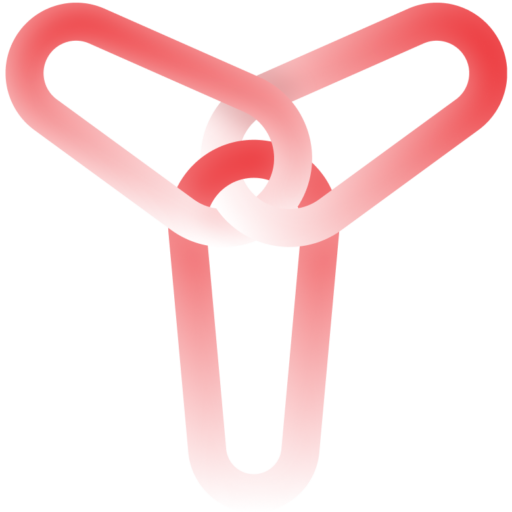Artificial Intelligence (AI) has rapidly transformed from a fledgling technological marvel into a powerhouse tool that permeates nearly every sector of our lives. From automating mundane tasks to driving major innovations in medicine, finance, and entertainment, AI’s capabilities are vast and diverse. Among its more controversial applications is its role in generating Not Safe For Work (NSFW) content. NSFW AI bots, designed to create adult-oriented material, have sparked a unique blend of interest and concern across various communities.
The allure of NSFW AI bots lies in their ability to produce highly customized and interactive content, catering to the specific preferences of their users. This personalization has not only captivated the attention of adult entertainment audiences but also tech enthusiasts fascinated by the underlying algorithms and potential uses of such technology. However, alongside this growing interest, there are significant controversies. Ethical debates rage over the implications of using machine learning for such purposes, including concerns about consent, privacy, and the potential for misuse. These debates touch on the core of what it means to responsibly harness the power of AI, setting the stage for a complex discussion on the balance between innovation and ethical boundaries in the digital age.
Table of Contents
ToggleWhat Are NSFW AI Bots?
NSFW AI bots, or Not Safe For Work Artificial Intelligence bots, are advanced digital algorithms designed to generate or manipulate content that is typically explicit or adult-oriented. These bots are primarily used in environments where discretion is advised, such as adult entertainment or personal privacy settings. The term “NSFW” is commonly used to denote material that is not suitable for viewing in traditional or professional settings due to its explicit nature.
The development of NSFW AI bots involves sophisticated AI technologies, including machine learning models and neural networks. These AI systems are trained using large datasets of adult content to understand and generate similar materials. The training process involves feeding the AI examples of various forms of adult content, allowing it to learn patterns, styles, and nuances characteristic of NSFW materials. This can include text, images, and videos, depending on the bot’s specific function.
The technology behind these bots often utilizes generative models, such as Generative Adversarial Networks (GANs) or Variational Autoencoders (VAEs). These models are particularly effective in creating realistic and high-quality images or videos that mimic human-generated content. For text-based NSFW content, models like OpenAI’s GPT (Generative Pre-trained Transformer) are adapted to understand and generate sexually explicit dialogue or narratives that cater to user interactions or preferences.
The Technology Behind NSFW AI Bots
NSFW AI bots leverage some of the most advanced AI models available today, utilizing a blend of natural language processing and image generation technologies. Two popular models often used in these bots are OpenAI’s GPT (Generative Pre-trained Transformer) for text and DALL-E for image generation. Each serves a unique function in the realm of content creation, tailored to the demands of NSFW applications.
Utilizing GPT for Text-Based Content
GPT models are particularly adept at understanding and generating human-like text. In the context of NSFW AI bots, a variant of this model can be trained to compose erotic literature or simulate interactive adult dialogues. The training process for these models involves feeding them a large corpus of text data, which typically includes a diverse range of erotic stories or dialogues, allowing the AI to learn various styles, themes, and lexicons used in adult content.
The effectiveness of a GPT model in generating NSFW text depends significantly on the quality and diversity of the training dataset. The model learns patterns and associations from the data it is given; thus, a more comprehensive and varied dataset results in a more nuanced and adaptable output. This training process involves fine-tuning the model on this specialized content after the initial pre-training on a broader dataset, enabling the AI to generate plausible and engaging NSFW text that resonates with human sensibilities.
DALL-E for Image Generation
DALL-E, another groundbreaking AI from OpenAI, is designed to generate images from textual descriptions, offering impressive capabilities in creating visual content. For NSFW AI bots, DALL-E can generate personalized erotic images based on specific prompts or preferences expressed by the user. Training DALL-E involves using a dataset of images that are typically labeled with descriptions. The AI learns to correlate certain phrases and keywords with images, which enables it to create new images that closely match user-generated descriptions.
The training regime for DALL-E in an NSFW context requires careful curation of the dataset to ensure that the resulting images adhere to ethical standards and legal constraints. The AI must learn not just to create images that fulfill the explicit requirements of a prompt but also to handle sensitive content responsibly, avoiding the creation of illegal or non-consensual imagery.
Legal and Ethical Considerations
The deployment of NSFW AI bots introduces a range of legal and ethical challenges that must be addressed to ensure responsible use and adherence to societal norms and laws. These challenges encompass issues of consent, privacy, copyright, and the potential for misuse, each critical to the integrity of how these technologies are utilized.
Legal Landscape of Digital NSFW Content
The legal framework governing digital NSFW content varies widely across jurisdictions, making it a complex landscape for developers and users of NSFW AI bots. In many countries, there are strict regulations regarding the creation and distribution of adult content, especially concerning age verification, consent, and the depiction of explicit material. For instance, some jurisdictions have specific laws against the creation and distribution of deepfake videos, a category under which some outputs of NSFW AI bots might fall.
In the United States, regulations such as the Communications Decency Act (CDA) and specific provisions under the Child Online Protection Act (COPA) set guidelines for what is permissible online. Additionally, copyright laws also play a significant role, as the use of someone’s image or likeness to create adult content without their consent can lead to significant legal repercussions.
Ethical Dilemmas
Consent: One of the most pressing ethical concerns with NSFW AI bots is the issue of consent. This includes consent from individuals whose likenesses or styles are used to train the AI, as well as the generation of content that might feature individuals who have not given explicit permission. Ensuring that all AI-generated content does not infringe on personal rights is a complex challenge that requires careful policy and technological safeguards.
Privacy: Privacy issues arise when personal data or preferences of users are utilized by NSFW AI bots. There’s a risk of data breaches or misuse, leading to personal exposure or blackmail. Developers must implement robust data protection measures to secure user information and ensure compliance with global data protection regulations like the GDPR.
Potential Misuse: The capabilities of NSFW AI bots can be misused to create non-consensual deepfakes or other forms of harassment and exploitation. Such potential misuse raises significant ethical concerns, necessitating strict regulations and controls on the development and deployment of these technologies. Measures could include watermarking AI-generated content to distinguish it from human-generated content and building detection tools that can identify deepfake materials.
Use Cases of NSFW AI Bots
NSFW AI bots, while often controversial, offer a range of applications across different sectors. From entertainment to education and research, these tools can provide innovative solutions and insights, provided they are used responsibly and ethically.
Entertainment: Personalized Adult Content Generation
One of the primary applications of NSFW AI bots is in the entertainment industry, particularly within adult content creation. These bots can generate personalized erotic literature, interactive adult games, or customized visual content tailored to the individual preferences of users. This personalization enhances user engagement by creating unique experiences that cater specifically to the tastes and desires of each user. For instance, a user can input specific scenarios, characteristics, or settings they prefer, and the AI bot can generate content that aligns with these inputs, providing a highly customized experience.
Education: Use in Sexual Health and Education Sectors
NSFW AI bots also have potential applications in the educational sector, particularly in sexual health and education. These bots can be programmed to provide anatomically accurate information, simulate health scenarios, or facilitate more interactive and engaging sexual education experiences. For example, they can be used to answer sensitive questions in a judgment-free environment, helping to educate individuals about safe sexual practices, consent, and sexual health without the discomfort that might come from human interactions. This can be particularly valuable in cultures or regions where discussing sexual health is taboo.
Research: Understanding Human Sexual Behavior Through Data Analysis
In the realm of academic and commercial research, NSFW AI bots can be instrumental in analyzing human sexual behavior. By collecting and analyzing large datasets regarding preferences and behaviors, researchers can gain insights into sexual norms, trends, and health practices. Such data can be invaluable for developing better health interventions, understanding the impact of pornography on society, and studying the psychological aspects of human sexuality. It’s important, however, that this research is conducted with strict adherence to ethical guidelines, particularly regarding privacy and consent in data usage.
Risks Associated with NSFW AI Bots
While NSFW AI bots offer numerous innovative applications, they also introduce several risks that must be carefully managed. These risks include perpetuating harmful stereotypes and biases, violating copyright laws, and compromising user privacy through data misuse or unauthorized content generation.
Perpetuating Harmful Stereotypes and Biases
One of the significant concerns with NSFW AI bots is their potential to perpetuate harmful stereotypes and biases. Because these AI systems are trained on datasets that may contain biased or stereotypical representations of gender, race, sexuality, or body image, the content they generate can inadvertently reinforce these biases. For example, if an AI model is predominantly trained on content that portrays women or minority groups in a derogatory or objectified manner, it’s likely to replicate these perspectives in its outputs. This not only distorts perceptions of normalcy and acceptability but also contributes to wider social harm by reinforcing negative stereotypes and discriminatory attitudes.
Potential for Violating Copyright Laws
NSFW AI bots often generate content by drawing inspiration from existing materials, which can lead to copyright infringement issues. If a bot creates images, videos, or texts that are substantially similar to copyrighted works without authorization, it could violate copyright laws. This is particularly problematic in cases where the likeness of individuals is used without their consent, potentially leading to legal action against the creators or users of the AI bot. The legal ramifications can be severe, entailing hefty fines and damages, and necessitating stringent measures to ensure that all generated content is either original or properly licensed.
Privacy Issues: Misuse of Personal Data and Unauthorized Content Generation
Privacy concerns are paramount in the operation of NSFW AI bots. These bots often require sensitive personal information to generate customized content, leading to risks of data breaches or misuse. Personal preferences, interactions, and data collected by the bots can potentially be used for unapproved purposes, sold to third parties, or exposed in data leaks, leading to significant privacy violations.
Moreover, the unauthorized generation of content, such as creating images or videos that include a person’s likeness without their consent, poses substantial privacy and ethical issues. This not only infringes on individual rights but also raises concerns about consent and the ethical use of AI technologies.
Best Practices for Developing NSFW AI Bots
The development and deployment of NSFW AI bots involve navigating complex ethical, legal, and social terrains. To ensure these technologies are used responsibly, developers must adhere to a set of best practices that prioritize ethical standards, transparency, and user safety.
Implementing Strong Ethical Guidelines
A foundational step in the responsible development of NSFW AI bots is the establishment of robust ethical guidelines. These guidelines should cover aspects such as:
- Consent: Ensuring all data used for training AI, especially data involving human subjects, is sourced ethically with explicit consent.
- Non-discrimination: Actively working to eliminate biases in training datasets and algorithms to prevent the perpetuation of stereotypes and discrimination.
- Accountability: Establishing clear accountability for the actions of NSFW AI bots, including mechanisms for addressing any harm they might cause.
- Respect for Privacy: Strict policies to protect the privacy of users and non-users, including secure handling of sensitive data and clear user consent for data usage.
By grounding AI development in these ethical principles, developers can help safeguard against misuse and promote fairness and respect within AI applications.
Ensuring Transparency in AI Training Processes and Data Usage
Transparency is critical in building trust and ensuring accountability in the use of NSFW AI bots. This involves:
- Openness about Data Sources: Clearly disclosing the origins of the data used for training the AI, ensuring it is ethically sourced and compliant with relevant laws.
- Explainability of AI Decisions: Developing AI systems that can explain their decisions and outputs in understandable terms, which is crucial for auditing and regulatory compliance.
- User Informed Consent: Providing users with clear, comprehensible information about how their data will be used, stored, and protected, and obtaining their informed consent before data collection.
These transparency measures ensure that stakeholders understand the workings and intentions behind AI applications, fostering greater acceptance and ethical usage.
Adopting Measures to Prevent Misuse and Ensure User Safety
To prevent misuse and enhance safety, several technical and policy measures must be implemented:
- Content Filtering and Moderation: Utilizing advanced moderation tools to filter out harmful content and ensure that the output complies with ethical standards and legal requirements.
- Security Measures: Implementing state-of-the-art security protocols to prevent unauthorized access to sensitive data and protect against breaches that could lead to misuse of the technology.
- User Control and Feedback Mechanisms: Empowering users with tools to control their experience and provide feedback on the content, enhancing the system’s responsiveness to user needs and concerns.
Maintaining Ethical Standards in NSFW AI Bot Deployment
Deploying NSFW AI bots with a focus on maintaining high ethical standards requires ongoing diligence and a proactive approach to oversight. Key strategies include regular audits, user education, and collaboration with experts to ensure both compliance and harm reduction. These practices help to balance innovation with responsibility, making sure that the use of such technology aligns with societal values and legal norms.
Regular Audits of AI Behavior and Outputs
Regular auditing is crucial to ensure that NSFW AI bots operate within the established ethical and legal frameworks and continue to do so as they learn and evolve. This involves:
- Performance Reviews: Conducting periodic assessments to verify that the AI’s outputs remain accurate, unbiased, and free of harmful content.
- Compliance Checks: Ensuring that the bots comply with all relevant laws and regulations, which may vary across different jurisdictions.
- Ethical Audits: Reviewing the AI systems to ensure they adhere to ethical guidelines, particularly regarding data use, privacy, and the generation of content.
These audits should be carried out by independent third parties whenever possible to provide an unbiased view of the AI’s performance and adherence to its ethical obligations.
User Education on the Potential Risks and Ethical Use of NSFW AI Bots
Educating users about the potential risks and ethical considerations associated with NSFW AI bots is essential for promoting responsible use. This education should cover:
- Awareness of Capabilities: Informing users about what the AI can and cannot do, and the nature of its interactions.
- Guidance on Safe Use: Providing guidelines on how to use these bots safely and responsibly, including understanding privacy settings and the implications of sharing personal data.
- Recognizing Misuse: Teaching users to recognize signs of misuse and how to report any concerns or problematic behavior by the AI.
Education initiatives can be facilitated through user manuals, online tutorials, and active customer support channels to ensure that users are well-informed and prepared to interact with these technologies safely.
Collaboration with Legal and Psychological Experts to Ensure Compliance and Harm Reduction
Collaboration with experts in law, psychology, and ethics can enhance the deployment of NSFW AI bots by ensuring that they are developed and used in a manner that minimizes harm and maximizes compliance:
- Legal Expertise: Working with legal professionals can help developers navigate the complex landscape of international and domestic laws governing digital content and privacy.
- Psychological Insights: Input from psychologists can guide the development of AI bots to address and mitigate potential psychological impacts on users, ensuring that interactions are healthy and do not encourage harmful behavior.
- Ethical Compliance: Ethicists can assist in crafting guidelines and decision frameworks that prioritize human dignity and respect for individual rights.
The Future of NSFW AI Bots
The trajectory of NSFW AI bots is shaped by both rapid technological advancements and the evolving landscape of legal and social norms. As these bots become more sophisticated and integrated into various aspects of digital life, their impact is poised to expand, bringing both opportunities and challenges.
Predictions on Technological Advancements and Their Potential Impact
Technological advancements in AI are expected to drive significant improvements in the functionality and realism of NSFW AI bots. Key developments might include:
- Enhanced Personalization: Future AI bots will likely offer even more personalized experiences, using advanced data analytics to tailor content more precisely to individual preferences and histories.
- Improved Interaction: Innovations in natural language processing and emotional recognition could enable NSFW AI bots to interact with users in more nuanced and emotionally intelligent ways, making the experiences more engaging and realistic.
- Greater Realism: Advances in generative AI technologies could lead to the creation of highly realistic and immersive virtual and augmented reality experiences, blurring the lines between digital and real-world interactions.
These technological strides, while enhancing user experience, will also raise significant ethical and social questions, particularly concerning the representation of reality and the potential for deepening emotional attachments to digital entities.
Discussion on the Evolving Legal and Social Norms Regarding AI and NSFW Content
As NSFW AI bots become more prevalent, both legal systems and social norms are under pressure to adapt. Key areas of evolution include:
- Legal Frameworks: There is likely to be an increase in specific regulations targeting the creation, distribution, and use of NSFW content by AI. These may include stricter age verification systems, rules governing the use of personal data in generating NSFW content, and standards for the ethical treatment of digital representations of humans.
- Social Attitudes: Public perceptions of NSFW AI bots are likely to evolve, potentially becoming more accepted as part of the mainstream digital landscape. However, this shift could also spark significant debate about the moral and psychological impacts of these technologies, particularly regarding issues of dependency, loneliness, and the nature of human relationships.
- Ethical Standards: There will be a growing need for a clear ethical framework that can guide the development and use of NSFW AI bots. This framework might address issues like consent, the avoidance of harm, and the promotion of positive social values through technology.
Conclusion
The exploration of NSFW AI bots reveals a dynamic intersection of technology, ethics, and law, highlighted by both their promising applications and the significant challenges they present. These bots have the potential to revolutionize entertainment through personalized adult content, contribute to sexual health education, and advance research in human sexual behavior. However, their development and deployment must be navigated with great care to address the inherent risks of perpetuating harmful biases, violating copyright laws, and infringing on privacy.
Recap of Main Points
- Technological Foundations: NSFW AI bots utilize sophisticated AI models like GPT for text and DALL-E for images, which are trained on specific datasets to generate adult content.
- Legal and Ethical Challenges: The deployment of these bots is fraught with legal hurdles and ethical dilemmas, including issues around consent, privacy, and potential misuse.
- Potential Benefits and Uses: Beyond entertainment, these bots serve educational purposes in sexual health and can be valuable tools for scientific research.
- Best Practices and Standards: Ensuring the ethical use of NSFW AI bots involves implementing strong ethical guidelines, maintaining transparency, and adopting robust security measures.
- Future Prospects: Technological advancements promise more immersive and personalized experiences, but they also require evolving legal and social norms to ensure these innovations benefit society responsibly.
10 FAQs About NSFW AI Bots
1. What is an NSFW AI bot?
An NSFW AI bot is a type of artificial intelligence designed to generate or interact with Not Safe For Work (NSFW) content, typically adult material. These bots use advanced algorithms to create personalized experiences based on user inputs.
2. How do NSFW AI bots work?
NSFW AI bots use machine learning models like GPT for text and DALL-E for images. They are trained on specific datasets to understand and generate NSFW content, responding to user preferences and interactions.
3. Are NSFW AI bots legal?
The legality of NSFW AI bots varies by jurisdiction. They must comply with local laws regarding adult content, digital consent, and data privacy. Developers and users must be aware of the legal landscape to avoid violations.
4. What are the ethical concerns with NSFW AI bots?
Ethical concerns include issues of consent, privacy, and the potential for perpetuating harmful stereotypes and biases. Ensuring that these bots are developed and used responsibly is crucial.
5. Can NSFW AI bots improve sexual health education?
Yes, NSFW AI bots can be used in sexual health education to provide confidential information and interactive learning experiences. They can simulate scenarios and answer sensitive questions, enhancing educational outreach.
6. How can the misuse of NSFW AI bots be prevented?
To prevent misuse, developers should implement ethical guidelines, conduct regular audits, and ensure transparency in AI training and data usage. Users should be educated on the ethical and safe use of these technologies.
7. What future advancements are expected in NSFW AI bot technology?
Future advancements may include more realistic and immersive experiences through better natural language processing and enhanced image generation. Ethical AI development will remain a priority as capabilities evolve.
8. How do NSFW AI bots handle user data?
User data must be handled with strict privacy measures in place. This includes secure data storage, clear data usage policies, and user consent protocols to protect personal information and ensure privacy.
9. What role do psychologists play in the development of NSFW AI bots?
Psychologists can help address the potential psychological impacts of interacting with NSFW AI bots. Their insights are crucial for developing guidelines that promote healthy interactions and prevent harm.
10. How can one stay updated on the changes in laws affecting NSFW AI bots?
Staying informed through legal advisories, technology news platforms, and participating in forums focused on digital rights and AI advancements can help users and developers keep abreast of changes in laws affecting NSFW AI bots.







